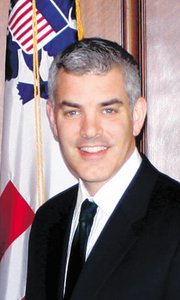New Apparel Customs Chief Has a Mission
John Leonard has barely been on the job for more than a month, but the new head of apparel and textiles enforcement at U.S. Customs and Border Protection is already setting up training programs to make sure his vast staff is knowledgeable about the new free-trade agreements coming on line sometime next year with South Korea, Colombia and Panama.
Leonard stepped into his new position as director of the textile enforcement and operations division on Oct. 3, taking over from Janet Labuda, a well-known force in the industry who retired at the end of 2010 after 30 years with the government agency.
Leonard’s most recent posting was in San Francisco as customs’ port director for the region. With 22 years at the agency, he has worked in Boston, Washington, D.C., and Alexandria, Va.
One of Leonard’s last act as San Francisco–area port director was to donate 2,400 confiscated fake San Francisco Giants T-shirts and baseball caps to the poor in Haiti. Customs agents seized the T-shirts outside AT&T Park earlier this year. The counterfeit T-shirts were made in Los Angeles.
Leonard recently talked to the California Apparel News about various customs issues involving the apparel and textile industry.
As the new director of CBP’s textile enforcement and operations division, what issues will be first on your list to tackle?
My priorities are going to be training of our staff and the trade on the free-trade agreements and trade-preference programs, about what the complexities of the agreements are, and how goods qualify. We are doing a general awareness of issues, enforcement and facilitation.
Are apparel and textile imported under free-trade agreements still going to get extra scrutiny?
It is not going to get any more scrutiny than it has had already. It is an area we look at because it is an area where non-compliance and fraud can occur. There is nothing extra that is happening. It is the same scrutiny we have always had.
My advice to importers is that they understand how to be compliant and how their documentation is important to assure their goods qualify and meet the qualifications for free trade. There are specific rules you must abide by for your textiles and apparel to qualify. (Free-trade agreements require that goods come from regionally made fabrics and inputs and are sewn by factories in the region.) Documentation is our primary means of establishing that goods qualify for duty-free entry.
Will CBP staff continue to visit overseas apparel factories to verify production?
We will continue our visits. We don’t announce anything in advance about where we are going. However, we use risk management to determine which countries and factories we are going to visit. If certain countries and factories have been giving us issues, then we are more likely to make a visit there to make sure the factories are making the goods. We haven’t visited China too often because they won’t allow us in. More recently, since quotas have gone away, we visit more countries involved with free-trade agreements, such as CAFTA (Central America) countries and AGOA (Africa) countries.
How prevalent is transshipment of apparel and textiles, and what actions will you be taking to stop it?
It still occurs, and it is still an issue that we focus our resources on. It is not an issue with one particular country. There have been a number of countries. It is difficult to say one or the other is more prevalent.
Are counterfeit apparel imports up, and what is CBP doing to stop it?
There has been an increase over the past three years in our seizures. Intellectual-property rights are always a priority of customs. We are finding more stuff that qualify as IPR infringements. Again, we do this based on risk management. The freight we inspect physically is always based on intelligence and a number of factors. One of our priorities is to get as much actionable intelligence as possible to inspect only the freight that is a very good target and reduces the cost at the border for the trade.
What you do think of Mexican customs’ recent visit to U.S. factories to verify that U.S. apparel sent to Mexico complied with NAFTA? Do you have any concerns?
I have no particular concerns. Under the NAFTA agreement, they are authorized to conduct verification visits. That is their right. All three signatories (Canada, the United States and Mexico) are allowed by the treaty to make visits into the other countries. We do it often.
What kind of action is CBP taking toward account-based management?
We are moving more and more towards it. You may have heard about our Centers for Excellence and Expertise. They are industry-based centers where CBP will focus on that particular industry and create a unified office to affect policy there. Our first two centers are in electronics and pharmaceuticals. We have no time frame for the apparel and textiles industry, but a program is being developed for that area. [The centers will serve as a single point of processing for businesses enrolled in the trusted-shipper programs as well as the Customs-Trade Partnership Against Terrorism (C-TPAT) program.]
There has been talk about a new apparel and textile safeguard being implemented on Chinese goods. Is that likely to happen?
We’ve heard no discussion about that.
Nearly half of the U.S. duties collected every year come from apparel and textiles. Why is apparel and textiles so heavily taxed, and is this likely to change?
The duty rates are set by Congress, and historically they have been high in apparel to protect our domestic industry. I am not in a position to say that it will go away.
Your predecessor, Janet Labuda, was fairly accessible to customs attorneys and customs brokers. How liberal will your open-door policy be?
I intend to have good communication with the trade. I welcome communication with the trade.























